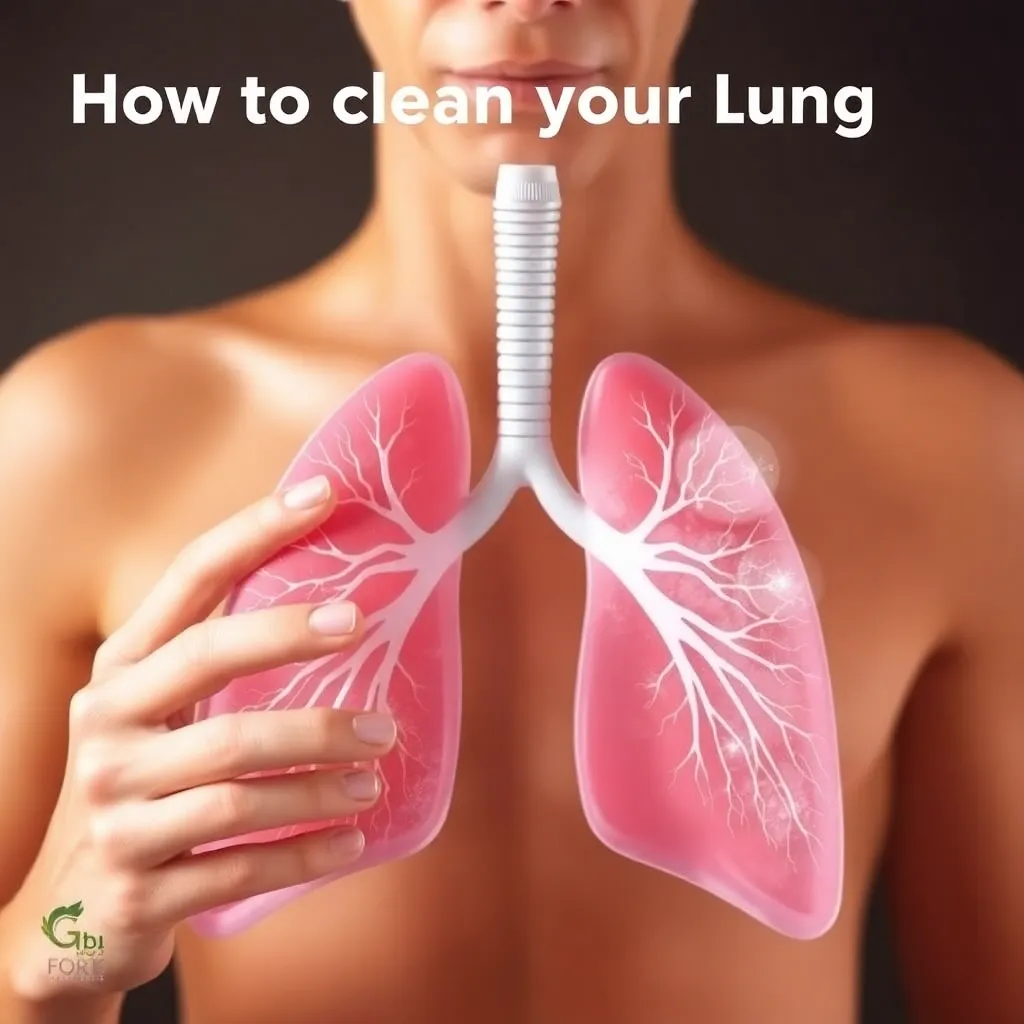
How to Clean Your Lungs of Pollutants: A Comprehensive Guide
Lungs are self-cleaning organs to an extent—but with exposure to air pollution, cigarette smoke, environmental toxins, and allergens, they can become overwhelmed. The good news is that there are many natural, evidence-supported strategies to help detoxify, protect, and support your lung health.
🫁 1. Understanding Lung Pollution
What Are Pollutants?
Pollutants can include:
- Particulate matter (PM2.5, PM10)
- Nitrogen dioxide (NO₂)
- Carbon monoxide (CO)
- Ozone (O₃)
- Tobacco smoke
- Volatile organic compounds (VOCs)
- Mold spores and allergens
How Pollutants Affect Lungs
- Irritate airways and alveoli
- Increase mucus production
- Cause inflammation and oxidative stress
- Contribute to chronic respiratory diseases like asthma, COPD, and bronchitis
- Reduce lung function over time
🌬️ 2. Natural Lung Detox Techniques
1. Controlled Breathing Exercises
Practices that enhance lung capacity and promote clearance of pollutants:
- Pursed-lip breathing: Helps exhale stale air and pollutants.
- Diaphragmatic breathing (belly breathing): Improves lung efficiency.
- Box breathing (4-4-4-4): Calms inflammation and strengthens respiratory muscles.
Try this daily: Inhale for 4 seconds, hold for 4 seconds, exhale for 4 seconds, hold for 4 seconds.
2. Steam Therapy (Inhalation)
Steam inhalation can help:
- Open airways
- Loosen mucus
- Soothe irritated tissues
How to do it: Boil water, pour into a bowl, cover your head with a towel, and inhale the steam for 10–15 minutes. Adding essential oils like eucalyptus or peppermint may enhance benefits.
3. Hydration Is Key
Drinking plenty of water helps:
- Thin mucus for easier expulsion
- Improve blood oxygenation
- Support overall detoxification
Aim for 2–3 liters of water per day (more if you’re physically active or live in a polluted area).
4. Postural Drainage
A physical technique to help drain mucus from the lungs using gravity.
Basic method:
- Lie on your back, stomach, or side
- Position your body so that mucus-filled areas of the lung are higher than the rest
- Practice deep coughing to expel loosened mucus
5. Chest Percussion
This technique, often used in hospitals, involves tapping the chest and back to dislodge mucus. You can do a gentle version at home or with a partner.
🧘 3. Exercise & Movement
Why It Matters:
- Increases lung capacity
- Improves circulation
- Promotes oxygen exchange and pollutant clearance
Best types of exercise for lungs:
- Brisk walking
- Swimming
- Cycling
- Yoga (especially pranayama-focused styles)
- Aerobic cardio like dancing or jogging
Tip: Exercising outdoors? Choose clean-air areas or early mornings when pollution is lowest.
🌿 4. Lung-Cleansing Foods and Herbs
Top Foods for Lung Health:
- Leafy greens (rich in antioxidants)
- Cruciferous veggies (broccoli, cabbage – help detoxify)
- Garlic & ginger (anti-inflammatory, antimicrobial)
- Citrus fruits (vitamin C and immunity)
- Berries (antioxidant powerhouses)
- Apples (linked to better lung function)
Herbal Remedies:
- Mullein: Soothes the respiratory tract
- Licorice root: Reduces inflammation
- Thyme & oregano: Antiviral, antibacterial
- Peppermint: Decongestant and soothing
Always check with your healthcare provider before using herbs, especially if you have existing health conditions.
🧴 5. Avoiding Further Exposure
Indoor Air Purity:
- Use HEPA air purifiers
- Keep indoor plants like spider plant, snake plant, or peace lily
- Clean with natural, non-toxic cleaners
- Ensure ventilation, especially during cooking
Quit Smoking (and Vaping)
This is the most critical step. Smoking introduces over 7,000 chemicals directly into the lungs, many of which are carcinogenic.
Mask Up in Polluted Areas
Use N95 or KN95 masks if you live in a high-pollution region or during smoggy days.
🧪 6. Medical Support & Checkups
While natural remedies are great, modern medicine plays a vital role in lung health:
- Pulmonary function tests (PFTs)
- Chest X-rays or CT scans for persistent symptoms
- Bronchodilators and steroids (for those with asthma/COPD)
- Vaccinations (flu, COVID-19, pneumonia)
Early intervention is key. Don’t ignore chronic cough, shortness of breath, or wheezing.
🕰️ 7. Long-Term Lifestyle Habits
- Stay physically active (150 mins of moderate exercise/week)
- Maintain a healthy weight (obesity compresses the lungs)
- Practice mindfulness and stress reduction (reduces inflammation)
- Limit alcohol (can impair immune function)
- Regularly detox your home of mold, dust, and chemicals
📆 Sample Weekly Lung Detox Routine
| Day | Activity | Notes |
|---|---|---|
| Monday | 30 min walk, diaphragmatic breathing | Do steam therapy in evening |
| Tuesday | Yoga + herbal tea (ginger/mullein) | Use HEPA filter during sleep |
| Wednesday | Cook with garlic, onions, and greens | Hydrate well, avoid heavy pollution |
| Thursday | Postural drainage + peppermint steam | Deep breathing before bed |
| Friday | Cardio workout (dance/swim) | Clean home air filters |
| Saturday | Hike in clean-air location or forest | Nature exposure benefits lung health |
| Sunday | Digital detox + mindfulness | Plan for the week, reflect on progress |
🌟 Conclusion: Your Lungs Can Heal
Lungs are resilient. Even after years of damage, many functions can be restored or improved through consistent lifestyle changes, avoidance of toxins, and supportive therapies.
Remember:
Small daily habits lead to big improvements in lung health over time.





